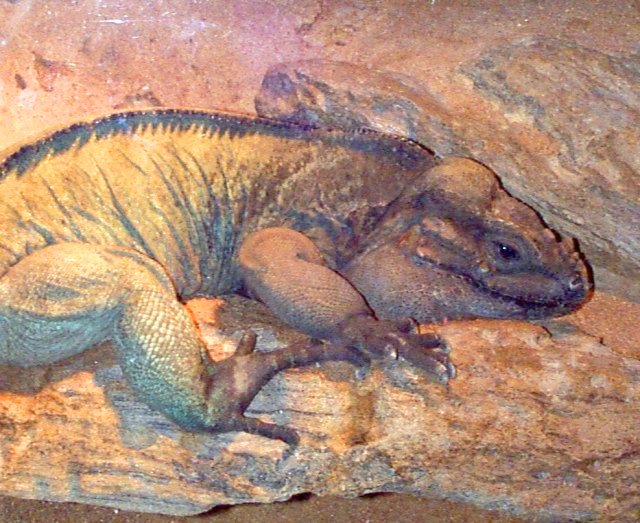 |
The Rhinoceros Iguana
 |
| Name: Rhinoceros Iguana |
| Scientific name: Cyclura cornuta |
| Range: Dominican Republic, the Caribbean |
| Habitat: Dry rocky areas and areas of open scrub |
| Status: Vulnerable |
| Diet in the wild: plant and animal material |
| Diet in the zoo: mixed salad of lettuce, celery, kale, carrots, alfalfa, apple, banana, orange, hard-boiled eggs, and an occasional whole mouse |
| Location in the zoo: Herpetarium |
| Special anatomical, physiological or behavioral adaptations
Rhinoceros Iguanas are diurnal, only active during the day. Their breeding season is in April. During this time, females dig nest cavities in the sand, and can lay as many as 16 eggs!! |
|
|
|
Rhinoceros Iguana:Sedgwick County Zoo Rhinoceros Iguana at the Glasgow Zoo Rhinoceros Iguana at The ARKive |
|
Crystal Cook or mac@whozoo.org |
WhoZoo Home Reptile Index Animal Index |